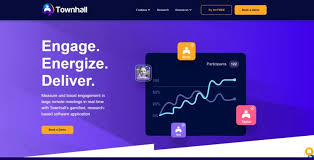Website Development: The Key to a Successful Online Presence
In today’s digital age, having a website is essential for any business or organization. A website serves as the online face of your brand, providing potential customers with valuable information about your products or services and giving them an opportunity to interact with your business. However, simply having a website is not enough. In order to stand out in a crowded online marketplace, it’s important to have a well-designed and user-friendly website that effectively communicates your brand message.
Website development is the process of creating and maintaining a website. It involves various elements such as web design, content creation, coding, and search engine optimization (SEO). A well-developed website not only looks great but also functions smoothly and effectively.
One of the most critical aspects of website development is web design. The design of your website should be visually appealing and reflect the personality of your brand. It should be easy to navigate and provide users with an intuitive experience. A good web designer will take into account factors such as color scheme, typography, layout, and user interface when designing your site.
Another crucial element of website development is content creation. Your website’s content should be engaging, informative, and relevant to your target audience. It should effectively communicate the unique value proposition of your brand while also providing users with valuable information that they can use.
Coding is another important aspect of website development. A good coder will write clean code that is optimized for performance and speed. They will also ensure that the site is compatible with all major browsers and devices.
Finally, search engine optimization (SEO) plays a vital role in website development. SEO involves optimizing your site’s content and structure so that it ranks higher in search engine results pages (SERPs). This helps potential customers find your site more easily when searching for relevant keywords or phrases.
In conclusion, if you’re looking to establish a successful online presence for your business or organization, website development is key. A well-developed website will not only help you stand out in a crowded online marketplace but also provide users with an excellent user experience. Whether you’re looking to build a new site from scratch or improve an existing one, working with a skilled team of web developers can help you achieve your goals and take your online presence to the next level.
7 Essential Tips for Successful Website Development
- Start with a plan. Before you start designing and coding your website, create a roadmap that outlines the design, content, and functionality of your site. This will help ensure that you stay on track throughout the development process.
- Focus on usability. Make sure that your website is easy to use and navigate so visitors can find what they need quickly and efficiently.
- Optimize for mobile devices. As more people are accessing websites from their mobile devices, it’s important to make sure your website is optimized for these users as well as desktop users.
- Utilize SEO best practices. Incorporate search engine optimization (SEO) best practices into your web development process to ensure that your site is visible in search engine results pages (SERPs).
- Test thoroughly before launch . Test every aspect of the website before launching it live to make sure everything works correctly and there are no bugs or errors present in the code or design elements of the site .
- Integrate social media . Add social media buttons and feeds onto your website so visitors can easily share content or connect with you on various social networks .
- Monitor performance regularly . After launch , monitor how visitors interact with your website by using analytics tools such as Google Analytics to measure traffic , page views , conversions , etc .
Start with a plan. Before you start designing and coding your website, create a roadmap that outlines the design, content, and functionality of your site. This will help ensure that you stay on track throughout the development process.
Start with a Plan: The Importance of Roadmapping in Website Development
When it comes to website development, starting with a plan is essential. Before you start designing and coding your website, it’s important to create a roadmap that outlines the design, content, and functionality of your site. This will help ensure that you stay on track throughout the development process and end up with a website that meets your needs and achieves your goals.
Creating a roadmap involves several steps. First, you need to define the purpose of your website. Are you looking to sell products or services? Provide information about your business or organization? Build an online community? Once you have a clear understanding of the purpose of your site, you can start thinking about its design and functionality.
Next, consider the user experience (UX) that you want to provide. What kind of navigation structure will work best for your visitors? What kind of content will be most valuable to them? How can you make sure that they can easily find what they’re looking for on your site?
Once you have a clear idea of the UX that you want to provide, it’s time to start thinking about the visual design of your site. What kind of color scheme and typography will best reflect the personality of your brand? What kind of layout will be most effective in communicating your message?
Finally, consider the functionality that you want to include on your site. Do you need e-commerce capabilities? A blog or news section? Social media integration? Make sure that all of these elements are included in your roadmap so that nothing gets overlooked during the development process.
In conclusion, starting with a plan is crucial when it comes to website development. By creating a roadmap that outlines the design, content, and functionality of your site, you can ensure that you stay on track throughout the development process and end up with a website that meets all of your needs and achieves all of your goals. So before you start designing and coding your site, take the time to plan it out and create a roadmap that will guide you every step of the way.
Focus on usability. Make sure that your website is easy to use and navigate so visitors can find what they need quickly and efficiently.
Focus on Usability: The Key to a Successful Website
When it comes to website development, one of the most important things to consider is usability. Your website should be easy to use and navigate so that visitors can find what they need quickly and efficiently. A user-friendly website not only helps visitors have a positive experience but also encourages them to stay longer and engage more with your brand.
Here are some tips for improving the usability of your website:
- Simplify Navigation: Make sure that your website’s navigation is simple and intuitive. Visitors should be able to find what they’re looking for with just a few clicks. Use clear labels and organize your content into logical categories.
- Optimize Load Times: Slow load times can frustrate visitors and cause them to leave your site. Make sure that your site loads quickly by optimizing images, using caching, and minimizing the use of plugins.
- Use Clear Calls-to-Action: Your website should have clear calls-to-action (CTAs) that guide visitors toward their desired actions. Use contrasting colors, bold fonts, and clear language to make CTAs stand out.
- Ensure Mobile Responsiveness: With more people accessing the internet on mobile devices than ever before, it’s crucial that your website is mobile-responsive. This means that it adjusts automatically to fit different screen sizes and resolutions.
- Test User Experience: Finally, test the user experience of your website regularly to identify any issues or areas for improvement. Ask for feedback from visitors or use tools such as heat maps or user testing software.
In conclusion, focusing on usability is essential for creating a successful website that engages visitors and encourages them to take action. By simplifying navigation, optimizing load times, using clear CTAs, ensuring mobile responsiveness, and testing user experience regularly, you can create a user-friendly site that delivers results for your business or organization.
Optimize for mobile devices. As more people are accessing websites from their mobile devices, it’s important to make sure your website is optimized for these users as well as desktop users.
Optimize for Mobile Devices: A Crucial Tip for Website Development
In today’s world, more and more people are accessing websites from their mobile devices such as smartphones and tablets. As a result, it’s essential to ensure that your website is optimized for mobile users as well as desktop users. Failure to optimize for mobile devices can lead to a poor user experience, which can ultimately result in lost business.
One of the most critical aspects of optimizing your website for mobile devices is ensuring that it is responsive. This means that the site’s design and layout should adjust automatically to fit the screen size of the device being used to access it. A responsive website ensures that users can easily navigate your site regardless of the device they are using.
Another key factor in optimizing your website for mobile devices is load time. Mobile users expect fast load times, and if your site takes too long to load, they may become frustrated and leave. To improve load times, you can optimize images and other media files on your site, reduce the number of plugins used on your site, and leverage caching techniques.
Finally, it’s important to consider the content on your site when optimizing for mobile devices. Mobile screens are smaller than desktop screens, so it’s essential to ensure that your content is easy to read on smaller screens. This may involve using larger fonts or breaking up longer blocks of text into smaller paragraphs.
In conclusion, optimizing your website for mobile devices is crucial in today’s digital age. With more people accessing websites from their smartphones and tablets than ever before, failure to optimize for mobile users can result in lost business. By ensuring that your site is responsive, loads quickly, and features easy-to-read content, you can provide an excellent user experience for both desktop and mobile users alike.
Utilize SEO best practices. Incorporate search engine optimization (SEO) best practices into your web development process to ensure that your site is visible in search engine results pages (SERPs).
Utilizing SEO Best Practices in Website Development
Incorporating search engine optimization (SEO) best practices into your web development process is crucial for ensuring that your site is visible in search engine results pages (SERPs). SEO is the practice of optimizing your website’s content and structure to rank higher in search engine results, making it easier for potential customers to find you online.
There are several key SEO best practices that you should incorporate into your website development process. First, conduct thorough keyword research to identify the most relevant and valuable keywords for your business or organization. Use these keywords strategically throughout your site’s content, including in page titles, meta descriptions, headers, and body text.
Another important aspect of SEO is ensuring that your site’s structure is optimized for search engines. This includes creating a clear hierarchy of pages and using descriptive URLs that include relevant keywords. Additionally, make sure that your site’s code is clean and free of errors, as this can impact how search engines crawl and index your site.
Incorporating social media into your website development process can also help boost your SEO efforts. By creating shareable content and incorporating social media buttons on your site, you can encourage users to share your content on social media platforms, which can help increase visibility and drive traffic back to your site.
Overall, incorporating SEO best practices into your website development process is essential for ensuring that your site is visible in search engine results pages. By conducting thorough keyword research, optimizing site structure and code, and utilizing social media effectively, you can improve the visibility of your website and attract more potential customers online.
Test thoroughly before launch . Test every aspect of the website before launching it live to make sure everything works correctly and there are no bugs or errors present in the code or design elements of the site .
Testing Thoroughly Before Launch: A Critical Tip for Website Development
When it comes to website development, one of the most critical steps is testing. Testing your website thoroughly before launching it live is essential to ensure that everything works correctly and there are no bugs or errors present in the code or design elements of the site.
Testing your website involves checking every aspect of the site, including functionality, usability, and compatibility. This means testing links, forms, images, videos, and other elements to make sure they work as intended. It also means testing the site on different browsers and devices to ensure that it displays correctly across all platforms.
By testing your website thoroughly before launch, you can identify any issues or errors that may be present and address them before they become bigger problems. This can help you avoid costly mistakes down the line and ensure that your site is functional and user-friendly from day one.
In addition to identifying bugs or errors in the code or design elements of your site, thorough testing can also help you identify areas where improvements can be made. For example, if users are having difficulty navigating your site or finding what they need, this may indicate that changes need to be made to improve usability.
In conclusion, testing thoroughly before launching a website is a critical step in the development process. It ensures that your site is functional and user-friendly from day one while also helping you identify areas for improvement. By working with a skilled team of web developers who understand the importance of thorough testing, you can ensure that your website is ready for prime time when it goes live.
Integrate social media . Add social media buttons and feeds onto your website so visitors can easily share content or connect with you on various social networks .
Integrating Social Media into Your Website: A Key Tip for Successful Website Development
Social media has become an integral part of our daily lives, and it’s also an essential component of any successful online marketing strategy. By integrating social media into your website, you can reach a broader audience and connect with potential customers in new and exciting ways.
One of the easiest ways to integrate social media into your website is by adding social media buttons and feeds. These buttons allow visitors to your site to easily share your content on their social media channels, such as Facebook, Twitter, LinkedIn, or Instagram. This can help increase the visibility of your brand and attract new followers.
In addition to sharing buttons, you can also add social media feeds directly onto your website. This allows visitors to see your latest posts or updates from various social networks without having to leave your site. This is a great way to keep visitors engaged and up-to-date with your brand’s latest news.
Integrating social media into your website not only helps you connect with potential customers but also provides valuable insights into their behavior. By analyzing the data from your social media feeds and shares, you can gain valuable insights into what content resonates with your audience and adjust your marketing strategy accordingly.
In conclusion, integrating social media into your website is a crucial tip for successful website development. By adding sharing buttons and feeds, you can increase the visibility of your brand and connect with potential customers in new ways. So why not take advantage of this powerful tool today?
Monitor performance regularly . After launch , monitor how visitors interact with your website by using analytics tools such as Google Analytics to measure traffic , page views , conversions , etc .
Monitor Performance Regularly: The Importance of Analytics in Website Development
Once your website is launched, it’s important to monitor its performance regularly. Analytics tools such as Google Analytics can help you measure various metrics such as traffic, page views, conversions, and more. By understanding how visitors interact with your site, you can identify areas for improvement and make data-driven decisions to enhance the user experience.
One of the primary benefits of monitoring website performance is that it allows you to track the success of your marketing efforts. By measuring traffic sources and conversion rates, you can determine which marketing channels are driving the most traffic and which ones are generating the most leads or sales. This information can help you optimize your marketing strategy and allocate resources more effectively.
In addition to tracking marketing performance, analytics tools can also help you identify technical issues on your site. For example, if you notice a high bounce rate on a particular page, it may indicate that the page is not loading properly or that the content is not engaging enough for visitors. By identifying these issues early on, you can address them quickly and prevent them from negatively impacting your site’s performance.
Regular monitoring of website performance also allows you to stay up-to-date with changing user behavior and preferences. As technology evolves and user expectations change, it’s important to adapt your site accordingly. By tracking metrics such as time on page and click-through rates, you can gain insights into how users are interacting with your site and make adjustments as needed.
In conclusion, monitoring website performance regularly is essential for any business or organization looking to maintain a successful online presence. By using analytics tools such as Google Analytics to measure traffic, page views, conversions, and other metrics, you can gain valuable insights into how visitors interact with your site. This information can help you optimize your marketing strategy, identify technical issues early on, and stay up-to-date with changing user behavior.




